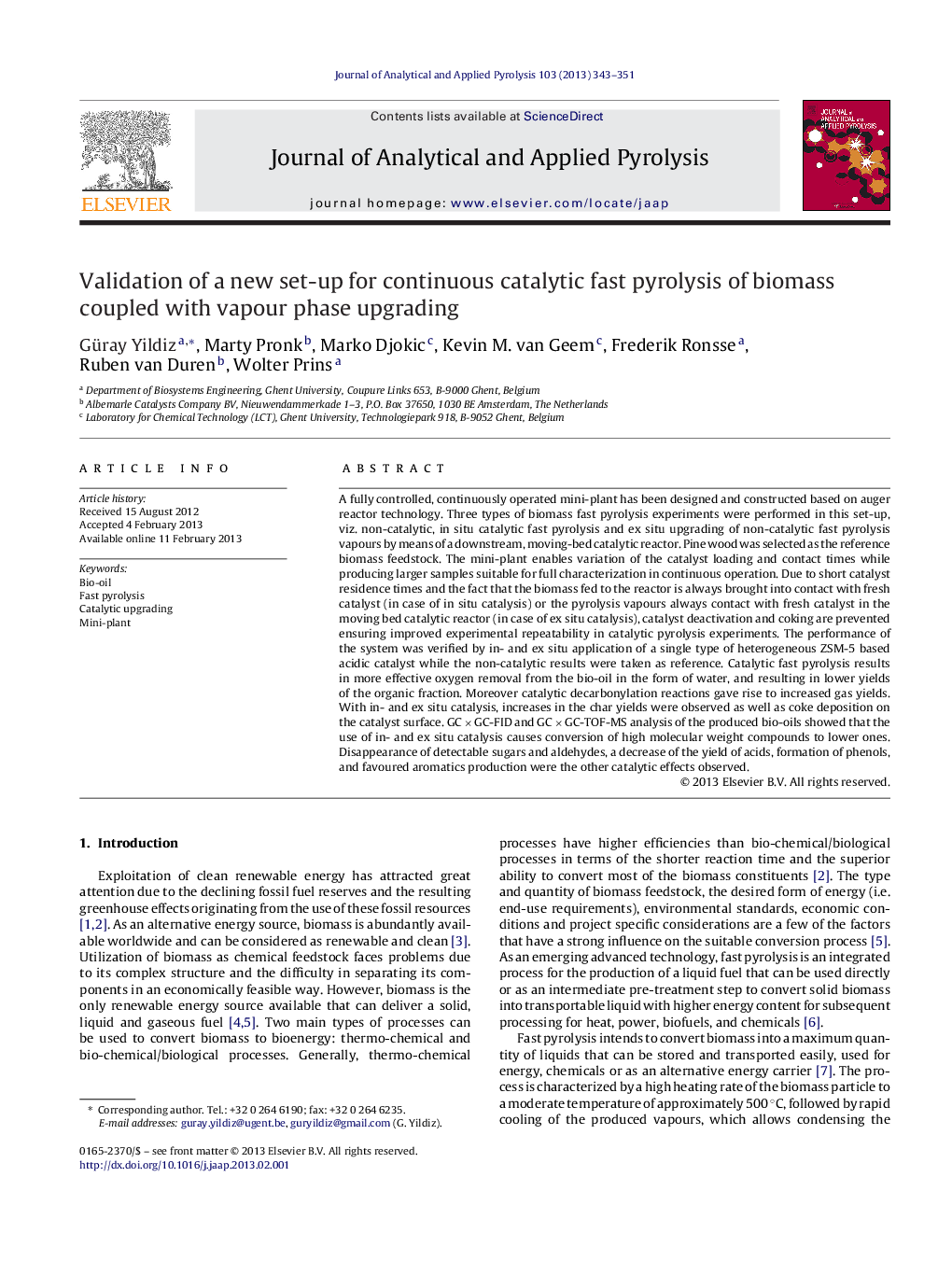| Article ID | Journal | Published Year | Pages | File Type |
|---|---|---|---|---|
| 1197205 | Journal of Analytical and Applied Pyrolysis | 2013 | 9 Pages |
A fully controlled, continuously operated mini-plant has been designed and constructed based on auger reactor technology. Three types of biomass fast pyrolysis experiments were performed in this set-up, viz. non-catalytic, in situ catalytic fast pyrolysis and ex situ upgrading of non-catalytic fast pyrolysis vapours by means of a downstream, moving-bed catalytic reactor. Pine wood was selected as the reference biomass feedstock. The mini-plant enables variation of the catalyst loading and contact times while producing larger samples suitable for full characterization in continuous operation. Due to short catalyst residence times and the fact that the biomass fed to the reactor is always brought into contact with fresh catalyst (in case of in situ catalysis) or the pyrolysis vapours always contact with fresh catalyst in the moving bed catalytic reactor (in case of ex situ catalysis), catalyst deactivation and coking are prevented ensuring improved experimental repeatability in catalytic pyrolysis experiments. The performance of the system was verified by in- and ex situ application of a single type of heterogeneous ZSM-5 based acidic catalyst while the non-catalytic results were taken as reference. Catalytic fast pyrolysis results in more effective oxygen removal from the bio-oil in the form of water, and resulting in lower yields of the organic fraction. Moreover catalytic decarbonylation reactions gave rise to increased gas yields. With in- and ex situ catalysis, increases in the char yields were observed as well as coke deposition on the catalyst surface. GC × GC-FID and GC × GC-TOF-MS analysis of the produced bio-oils showed that the use of in- and ex situ catalysis causes conversion of high molecular weight compounds to lower ones. Disappearance of detectable sugars and aldehydes, a decrease of the yield of acids, formation of phenols, and favoured aromatics production were the other catalytic effects observed.
